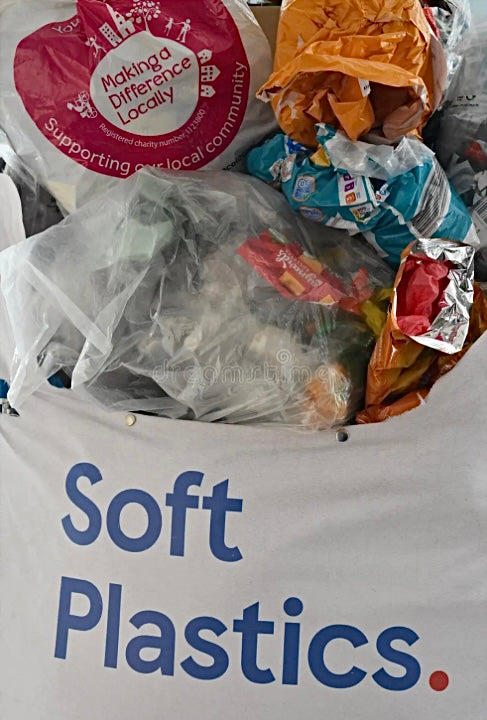Soft Plastic Waste - New initiative for recycling?
The packaging industry is subject to regulations and guidelines aimed at reducing waste and promoting recycling. the key framework that governs these regulations is the national packaging targets, which were established by the australian packaging covenant organization (apco). The targets aim to ensure that packaging is recyclable, reusable, or compostable by 2025. the targets also include goals for increasing the use of recycled content in packaging.
PLASTIC WASTE RECYCLING:
Plastic recycling in australia is managed through a combination of industry initiatives and government regulations. the most common types of plastic packaging accepted for recycling include pet (polyethylene terephthalate) bottles, hdpe (high-density polyethylene) bottles, and plastic containers with the recycling symbol codes 1 and 2. We are all well aware of this. But what happens now with soft plastics?
New laws in 2025 can’t come quick enough!
A recent meeting held involving Federal environment minister, Tanya Plibersek is to aim to have a new regulatory scheme to resolve plastic packaging waste and (again) establish a circular economy that would minimise waste and lead to materials being “recovered, reused, recycled and reprocessed”.It promised compulsory rules for packaging design based on international best practice and that harmful chemicals and contaminants would be regulated out. Arranging kerbside waste collection across the country and a framework for recycled content traceability would be introduced to give business confidence to use recycled materials. (The Guardian 9 June Australian government impose recycling rules)
Plibersek said while some in the industry had voluntarily reduced their impact, it had been “just not enough”. An official review in April 2023 found Australia was recycling just 18% of plastic packaging, and would fall well short of a target of 70% by 2025.

New initiatives such as Recycle Smart works with APR Plastics who use a Biofabrik WASTX machine to “melt” the soft plastics. One kg of soft plastics makes nearly 1 ltr of oil (850 ml) which is then used to make new plastics! Recycle Smart relies on the customer to pack and pay for collection of $5 a bag and is not yet widely introduced.
The Boomerang Alliance, a collective of 55 environment groups, said the agreement proposed by Plibersekwas the first “substantial and meaningful step” to deal with waste in 20 years.
“This is absolutely the right decision, and a key first step to tackle the growing waste and plastic pollution harming the oceans and climate,” the alliance’s director, Jeff Angel, said.
“Mandatory standards for recycled content and targets are essential to create the economic rationale for new recycling and reprocessing plants. New rules to minimise wasteful packaging will also help tackle the plastic waste and pollution tidal wave projected by the UN.”
Angel advocated that the agreement needs to be endorsed by “a comprehensive product stewardship scheme” that forces the packaging and manufacturing industry to pay for collection and recycling programs. It should not rely on the consumer to arrange and pay for recycling. The recycling cost inclusion scheme of glass recycling could provide an answer here where the product price is made slightly dearer to recoup the cost of recycling.
Angel said it must avoid the mistakes of the failed REDcycle scheme, which led to 12,000 tonnes of soft plastics collected at supermarkets being stockpiled in warehouses across three states while consumers were told it was being recycled. This as demand of buy back is not there. These new regulations need to ensure the full circular loop is considered. Similar to recycling of PVC from pool inflatables by PLOYS it’s initiate is only as good as the customers will to buy back.
The recycling process
The recycling process for plastic waste typically involves the following steps:
- collection: plastic waste is collected through curbside recycling programs or dedicated recycling drop-off points.
- sorting: collected plastic waste is sorted based on its type and quality, usually using automated sorting machines.
- shredding and washing: the sorted plastic waste is shredded into small pieces, and contaminants like labels and caps are removed. the plastic pieces are then washed to eliminate dirt and debris.
- melting and pelletizing: the cleaned plastic pieces are melted and transformed into pellets or flakes, which can be used as raw materials for manufacturing new plastic products.
it's important to note that while recycling is an essential part of waste management, it is also crucial to reduce plastic consumption, reuse items when possible, and properly dispose of non-recyclable plastics. additionally, recycling guidelines may differ between states and territories in australia, so it's advisable to check the specific rules in your local area.
References:
- The Guardian, Australian governments impose recycling rules after packaging industry fails on waste, 9 June 2023
- Waste management review, plastics into oil at APR, May 2022
- Recycle smart, soft plastics recycling, 22 July 2023
- The Boomerang Alliance, which supermarkt plastics do you want phased out, July 2023

